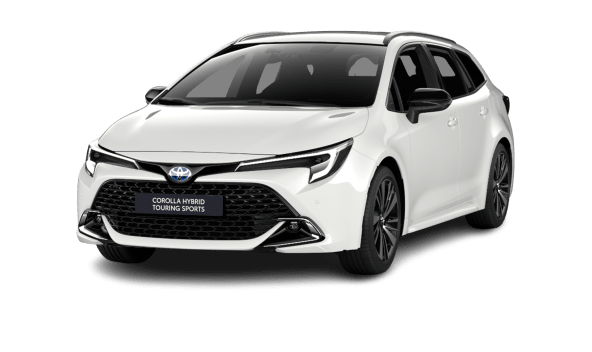Hybrid vs. Electric: Which Should You Choose?
Which should you buy: a hybrid or an electric vehicle? Find out which gas alternative vehicle best suits your lifestyle, including the pros and cons of each.
Read time
10 minutes
Date
03.01.2024
Share

If there’s one thing to know about the automotive industry lately, it’s that electric vehicles (EVs) and hybrids have been heating things up over the past few years. Cox Automotive reported a 92% increase in EV inventories in 2023, with over 70 new EV models coming in the next two years.
The Cox Automotive Economic and Industry Insights team also forecasts the EV market share will reach 10% in 2024, requiring a 2.4% increase from 2023. With nearly every automotive manufacturer in the industry going green, is it better to buy a hybrid or electric vehicle?
If you still can’t decide, check out a FINN car subscription to test out both types of vehicles. FINN offers flexible terms and an affordable monthly payment that includes registration, insurance, depreciation, and maintenance. FINN stocks a vast fleet of vehicles, so you can test hybrids and EVs to your heart’s content.
Find your car
What is a hybrid car?
A hybrid car requires an electric motor and a traditional internal combustion engine (ICE) for power. The U.S. Department of Energy’s Alternative Data Fuels Center recognizes two types of hybrids: conventional and plug-in. In a traditional hybrid, the electric motor supports the ICE to stretch each gallon of fuel further. Plug-in hybrid electric vehicles (PHEVs) require a power source to charge and can take over to power the vehicle for a short distance.
In the case of traditional hybrids, regenerative braking or the gas-powered engine charges the electric motor. There’s no need to plug the vehicle in to charge the electric motor. Alternatively, the additional power supplied by a plug-in hybrid’s electric motor means manufacturers can install a smaller internal combustion engine without losing power or torque. When the electric motor in plug-in hybrid cars drops below a specific charge, the gasoline engine takes over.
What is an electric car?
Electric cars, sometimes called “battery electric vehicles” or BEVs, don’t require a single drop of fossil fuels. Instead, an enormous battery pack powers every component. While electric cars don’t produce any tailpipe emissions, they require charging. Level 1 charging requires a standard 110-volt outlet, and Level 2 requires a 220-volt outlet, but DC Fast Charge juices up the battery the fastest.
Fully electric cars rely on battery packs to store electric power. As you operate the electric car, that charge decreases, similar to the battery cycle of a smartphone. In addition, these batteries must be charged optimally to extend their lifespan, although they still deteriorate over time. It’s still unclear how long EV batteries can last as the technology remains in its infancy.
Pros and cons of hybrid vs. electric vehicles
Juxtaposing hybrids and electric vehicles regarding their individual pros and cons can help you visually differentiate between the two types of vehicles. Below are the pros and cons of hybrid carsand electric vehicles.
Pros
Hybrid and electric cars offer consumers a more affordable and environmentally friendly way to commute. Below are the pros associated with hybrid and electric vehicles:
Hybrid | Electric |
|
|
Cons
Despite saving owners more on fuel costs, hybrid and electric vehicles do have their downfalls. The table below demonstrates some of the most common drawbacks of hybrids and EVs:
Hybrid | Electric |
|
|
What are the main differences between hybrid vs. electric cars?
Wrapping your head around the distinctions between hybrids and EVs can be challenging. Check out the list below to see the main differences between electric and hybrid cars:
Characteristics | Hybrid | Electric |
Power Source | Internal combustion engine and electric motor | Electric battery |
Fuel Type | Gas and electricity | Electricity |
Range | Gas engine extends beyond a short electric range | Varies by manufacturer |
Emissions | Lower emissions than gas-only vehicles | Zero tailpipe emissions |
Ownership Cost | Can be more expensive than gas-powered cars but less than electric vehicles | High initial costs but lower fueling costs than gas-powered cars |
Maintenance | Higher than gasoline due to dual engine setup | Fewer parts that are costly to replace, including battery |
Warranty Coverage | Varies by manufacturer | Ranges from 8 years or 100,000 miles to 10 years or 150,000 miles |
As you compare and contrast EVs and hybrids, list features you like about each type of car. How will those features integrate with your lifestyle? Reviewing your options before you make a purchase can help you make a better decision regardless of which type of car you choose.
Which is cheaper?
Between hybrids and electric vehicles, EVs tend to have a higher sticker price. Indeed, finding an affordable hybrid is often easier than finding an equivalently affordable EV. With a higher price tag comes a bigger tax bill. However, EVs cost less to charge than filling up a hybrid vehiclewith gas.
Depreciation rates will affect various makes and models differently, but EVs tend to depreciate faster due to the combination of advanced technological features and alternative fuel sources. Regarding obsolescence, EVs face a more significant threat based on the rapid pace at which the industry evolves. Hybrid technology has a few years on its electrified counterparts.
However, hybrids and EVs alike dig deep into consumers’ pockets with ownership costs related to maintenance. The pairing of an electric motor and internal combustion engine in hybrids results in a complicated powertrain that can be expensive to fix. Some parts can be hidden behind others in hard-to-reach places, driving up labor costs. In essence, hybrids take on the financial burden of electric powertrain maintenance costsand those of the traditional gas-powered engine, such as oil changes.
In contrast, the larger battery pack is the Achilles’ heel of electric vehicles. Replacement of this vital component can cost EV owners several thousand dollars, a fee that sometimes nearly rivals the price of a used car. With that said, at least 15 states require automakers to offer a battery warranty of 10 years or 150,000 miles. Many newer EVs come with an eight-year, 100,000-mile warranty from the factory.
Is there a tax credit for electric vehicles?
Finding the best SUV lease dealscan help you save money on your monthly car payment. However, tax credits for electric vehicles can help you save even more. The Alternative Fuels Data Center includes all the information you need to know about EV tax incentives. Depending on your EV's qualifications, you can get up to $7,500 in federal tax creditsand up to $4,000 depending on which state you live in.
If you’d like to learn more about tax credits for new EVs, the IRS also spells out how different electric vehicles can qualify. The Clean Vehicle Tax Credits resource discloses methods for claiming EV tax credits for your business. FuelEconomy.gov’s Tax Incentives page can help you determine how much your vehicle is eligible for in federal tax incentives, whether you own a Ford, Toyota, Tesla, Hyundai, or Kia.
What’s the environmental impact of hybrid vs. electric cars?
Environmentally speaking, hybrid cars represent the middle ground between gas-powered and electric vehicles. Gas-powered vehicles require emissions systems to reduce their carbon footprint. Electric cars have zero tailpipe emissions. Hybrids are somewhere in between.
One key thing to remember with hybrid vehicles is that they require smaller amounts of precious materials than their electric counterparts. Green Car Reports quantifies the amount, noting the number of electric cars produced until 2014 had used “as much battery capacity as every hybrid built in 17 years.” With EV sales rising and production ramping up to meet those demands, it’s reasonable to assume the ratio of hybrid to electric batteries built has only increased.
Should you drive a hybrid or electric vehicle?
The answer to the question, “Hybrid or electric?” depends on your lifestyle and what daily demands you place on your vehicle. Your budget also plays a significant role in narrowing your options. However, personal preference can trump any of the above and ultimately lead you to your final decision.
If you’re someone who doesn’t drive far or often and has the mental capacity and time to adapt your daily habits to the needs of an electric vehicle, tax incentives and fuel savings can help compensate for a higher price tag. Electric cars also help conscientious drivers reduce their carbon footprint. Gaining access to new car technology and some of the most dynamic models released to date isn’t a bad thing either.
However, you may be more suited to a hybrid if you’re skeptical about charging your vehicle at public charging stations, reducing real-world car ownership costs, or investing in a quickly depreciating asset threatened by obsolescence despite the tax rebates. Hybrids provide similar fuel savings, albeit on a smaller scale. Choosing a traditional or plug-in hybrid vehicle depends again on your propensity to charge your car before going on long road trips.
Hybrid vs. electric FAQs

Final thoughts
Selecting between a hybrid or electric vehicle can leave you cross-eyed as you attempt to figure out which best fits your lifestyle. Hybrid cars can help consumers who are skeptical about EVs' real-world value bridge the gap. However, EVs offer some of the best return on investment regarding fuel costs and tax incentives. Ultimately, it’s a question of how comfortable you feel integrating an alternatively fueled vehicle into your life.
If you’re still caught between an electric car and a hybrid, a FINN car subscription can help. When you subscribe to FINN, your monthly payment includes depreciation, insurance, registration, and maintenance. For hybrids and EVs, this monthly subscription fee covers the majority of car ownership costs. FINN also delivers your subscription straight to your door so you can start test-driving immediately.








